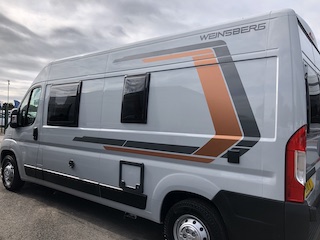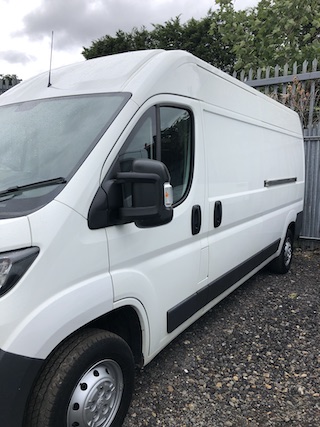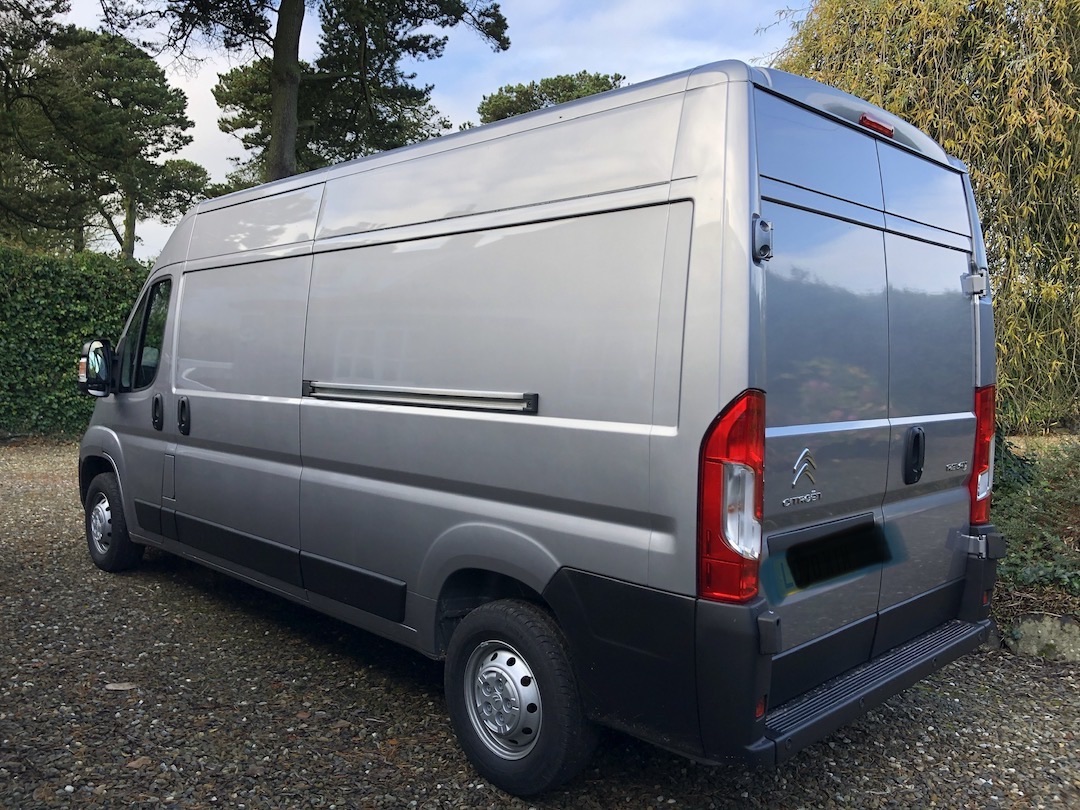Before we launch into how we chose the base vehicle to use for our campervan conversion, let us tell you why we decided to take on such a crazy project!
Inspiration
It was one fine day in Portrush when the first lockdown of 2020 had been lifted, that we met an Argentinian guy who was travelling with his family in a van that he’d converted himself.
Our new found hobby since returning home from our unfinished cycling tour of Sri Lanka in March 2020, was trawling the internet, and, when permitted, walking the streets of Portrush, searching out camper vans. We had started toying with the idea of investing in a van for our next travel adventure. After getting locked down in Sri Lanka we felt so vulnerable and isolated on the bicycles. It made us think that for our next travel adventure we would be better being in our own self-contained vehicle.
Anyway little did we think that this friendly Argentinian would be the one to dissuade us from buying a ready made campervan, but he would be the one to inspire us to build our own! “It’s easy” he said, “everything you need to know is on YouTube, just watch the Greg Virgoe videos”.
Later that same day, and for many, many days, weeks and months afterwards, we spent an endless amount of hours watching YouTube videos on how to build a campervan. It looked so easy, surely we could try our hand at that!
The inspiration from our Argentinian friend was the impetus we needed to take on this new challenge. Up until this point we had not been able to find a campervan that was designed to meet our specific needs, so designing our own was the obvious choice. Plus with our bed and breakfast business decimated due to the global coronavirus pandemic, we had a lot of time on our hands and needed something to do.

Essential criteria
Before we could choose the vehicle to use for our self-build camper conversion, we had to consider what design features were important to us, and those that were less important. This would determine the size of vehicle we were going to need.
We were in the lucky position of having experience of living and travelling in a campervan so had a good idea of what we wanted, and what we didn’t want. Our six months driving “Spot” around Australia in 2000/01 had taught us a lot!
Our essential and non-negotiable top three criteria for our van build were:
- Fixed bed
- Inside storage for our bicycles
- On board toilet and shower
In addition we had our list of what we would prefer to have in our base vehicle:
- Enough headspace for Dave to be able to stand upright (he’s about 6ft)
- A van big enough to be able to live in for extended periods of time (6-12 months) in all seasons
- A van small enough to visit family and friends in cities and urban areas
- A van less than six metres in length for ease of parking (and it means a cheaper tariff on ferry crossings – the prices go up if your vehicle is longer than six metres!)
- A reliable, well-maintained van versatile enough to take us off the beaten track
Plus we had our list of what we knew we didn’t want from our base vehicle:
- An old van with high mileage and high maintenance
- A van so big that you have to get a special driving licence
- A white van!

Research, research, research
It didn’t take us long to realise that there is no such thing as the perfect base vehicle for a camper van conversion. But there are definitely some vans that are more suited to converting than others, and that’s where your research is key.
As well as our endless hours of watching “how to build a campervan” YouTube videos, we started looking online at van conversion companies to see what types of van they were using as the base vehicle. The top two contenders at this stage were the Mercedes Sprinter and the Volkswagen Crafter. And that was the route we were going down until we found the very helpful online forum at Self Build Motor Caravanners Club (SBMCC).
This SBMCC forum was undoubtedly our best find during the entire research, and subsequent self-build, process. The £15 annual membership was well worth it for the valuable information and knowledge we gained. The forum was full of people who were doing, or had already done, exactly what we wanted to do.
It was on this forum that we learned that a Sevel van gives you a few extra centimetres width if you’re planning, like us, to have a fixed bed traversing the van. And you all know every inch (or centimetre) counts! We were completely ignorant as to what a Sevel van was and had to ask the question. The answer was a van from the Sevel factory in Italy which makes pretty much identical vans for Fiat, Citroen and Peugeot.
And so our mind was made up, we were going to start shopping for a good second-hand Fiat Ducato, Citroen Relay, or Peugeot Boxer van.
Shopping around
Shopping you think is the fun part, but no, it was far from it! Bearing in mind this was in the midst of the 2020 global lockdowns and the demand for vans, both old and new, was almost outstripping supply. The rise in vans needed by courier and delivery drivers during the pandemic was increasing daily. Combine that with the booming #VanLife phenomenon, and we were left with very slim pickings at very extortionate prices. On top of that we could only view vans located in Northern Ireland.
We were trying to find vans that were 2-3 years old with low mileage and the average price was coming in at around £14,000 +VAT. A lot of money for a second-hand vehicle with no guarantees.
A price comparison with brand new vans proved if we could stretch our budget to £16,495 +VAT we could get a brand new, pre-registered van and a clean slate from which to start our build. And that is what we did.
We chose a Citroen Relay 35 L3H2 2.2 Diesel Euro 6 panel van in Cumulus Grey metallic paint from Vans Direct. It was not a buying process we’d want to repeat, but maybe more on that another time!
We took ownership in early December 2020 and the build got underway.



0 Comments